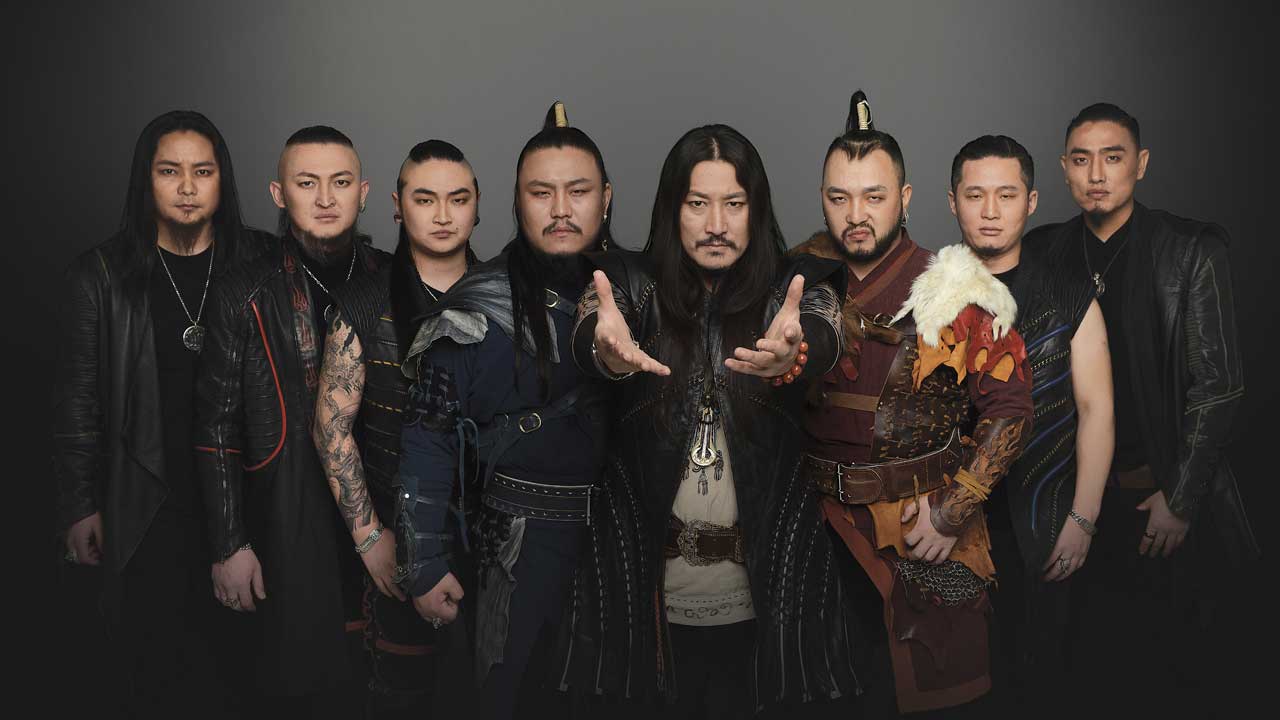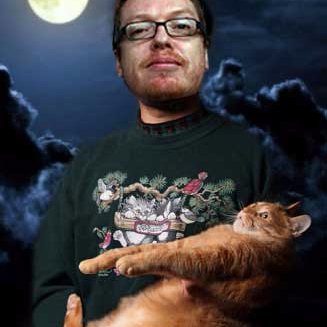The Hu’s overnight success has been a long while in the making. The seeds for Mongolia’s most successful export since Genghis Khan united the nomadic tribes and set out to conquer Europe and Asia in the 13th century were planted a decade ago, when the band’s producer Dashka started a musical project to pay tribute to his father.
This kind of connection to history runs deep in the Hu’s music, and Rumble Of Thunder, the second album from the inventors of ‘hunnu rock’, finds the fearsome foursome telling stories, communing with nature and offering some pretty good guidance about how we could all live our lives a little better.
“There are messages that we try to deliver,” says frontman Gala. “And even though we sing in a different language, everybody seems to understand what we’re trying to say.”

The Hu are undertaking their own conquest, one fan at a time.
Classic Rock spoke to Gala on the road in Ohio, where The Hu are partway through a lengthy US tour with Megadeth and Five Finger Death Punch. And while some fans are familiar with the band through the success of their videos, others need a little convincing.
“Sometimes those fans are startled by our show,” says Gala. “But after one or two songs they get used to it and act as if they’ve known us for the longest time. At the end of the performance they’ll be chanting and clapping for us.”
The mysterious Dashka is their mastermind.
The band’s producer – himself a singer – started with a single song for his father, and slowly assembled the band to reflect his vision of hunnu rock, bringing in experienced musicians he knew would be perfect for The Hu. Gala worked with the national orchestra, Enkush was in another band, Temka was an arranger, and Jaya taught wind instruments to college students.
“It evolved into the thing we have today, with Dashka’s dreams of the hunnu rock genre created, with The Hu selected to represent it,” says Gala. “Dashka is behind the scenes of everything.”
They’re inspired by their own instruments.
Gala plays the morin khuur, otherwise known as the horse-head violin, but his is not like other morin khuurs. His has been customised, to make it more real, more vivid, and more inspirational.
“Normally, the horse’s head faces the audience,” Gala explains. “But Dashka asked: ‘Why can’t it face the singer? Why can’t the horse show emotion?’ So if you look closely at our instruments, you’ll see that the horse is actually neighing, with its teeth displayed. It’s really lifelike, and faces the performer, showing the emotion of the performer himself.”
Horses are important.
It’s a well-worn cliché that Mongolians can ride before they can walk, but it’s not far from the truth. You’ll even find horses – and other animals – in The Hu’s rhythms and instrumentation.
“Every Mongolian, no matter their age – even a toddler – will ride without fear, without a care in the world,” says Gala. “It is in our DNA. We know how to ride without being taught, we respect horses sincerely, and we have a great spiritual connection with them.”
The Hu are a product of globalisation – in a good way.
The Hu’s videos are glorious widescreen advertisements for the epic nature of both the band’s stirring music and Mongolia’s landscape. Now the band are officially appointed cultural ambassadors for the country.
“YouTube and social media and the globalisation of modern society has helped us get the messages we’re trying to deliver to the world out there,” says Gala: “to be environmentally aware, to be friendly, to be self-aware, to have strength inside, to be inspired to do better, and to be a better version of yourself.”
What The Hu do next might be a surprise.
Album number three is coming soon, Gala tells us, and, having worked with the likes of Lzzy Hale and Jacoby Shaddix, there’s plenty of scope for more of that sort of thing. Or other things.
“The great thing about the hunnu rock genre is that we can work with anyone,” says Gala. “Rock, pop, hip-hop, R&B, whatever.”
Rumble Of Thunder is out now via Better Noise.

